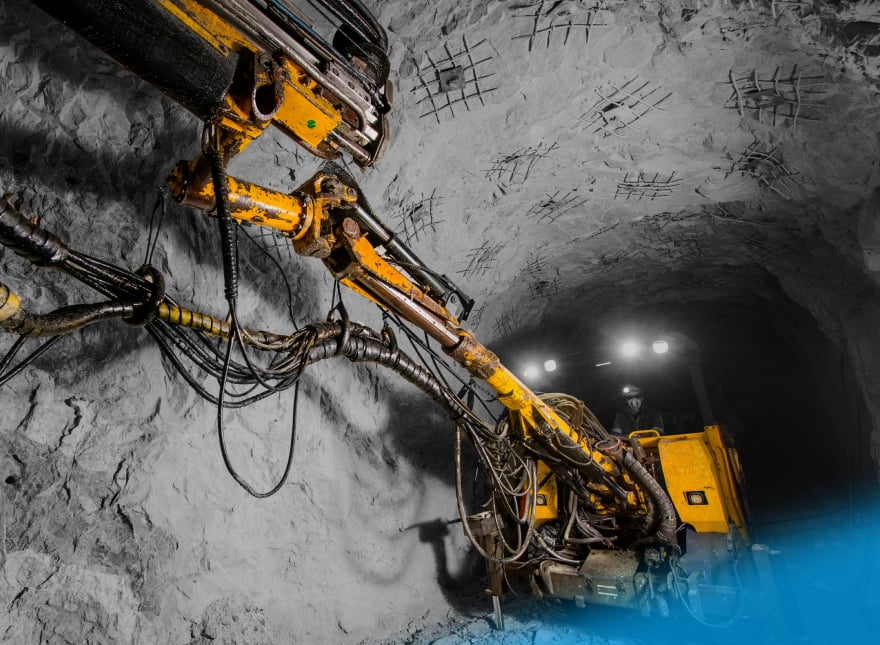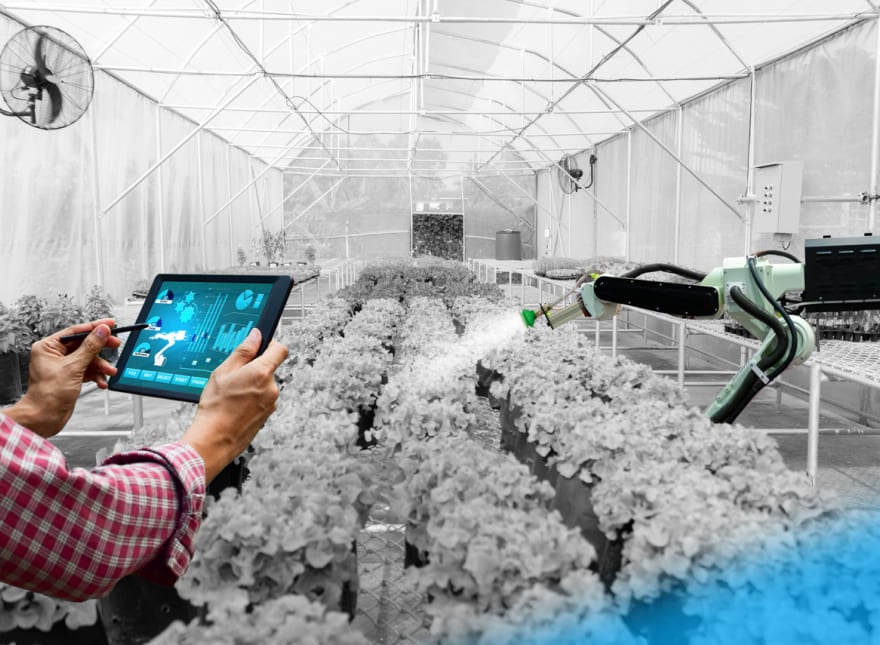Check out our latest blog article: From component to enterprise – modular robotics done right.
Smart Building Technology: How to Stand Out From Competition in Commercial Real Estate
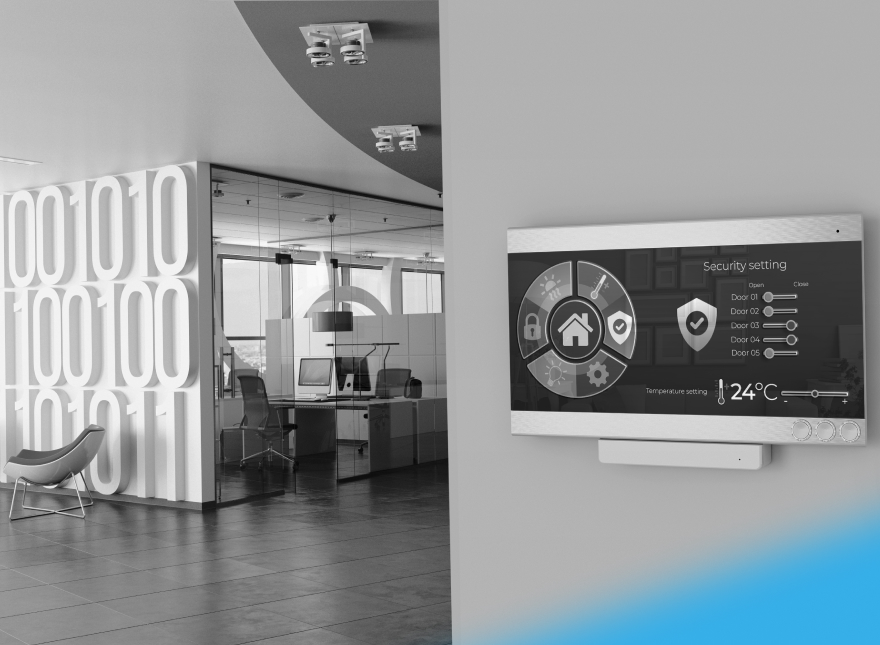
Competition in commercial real estate is high, especially now, when many companies are already used to the home office. How do you convince high-demanded tenants to choose your building over your high-end competitors? And if your building isn’t the latest and greatest, how do you stay attractive in the commercial building rental market?
The solution for class A, B, and C buildings is the use of smart building automation systems (BAS). Find out how real estate companies can benefit from BAS with AI and IoT for commercial buildings.
What Is Building Automation?
Heating, ventilation, air conditioning, lighting, security, plumbing, and electrical systems—all add to the comfort of occupants. And their use requires lots of control and management. To ease the task, here comes a building automation system (BAS).
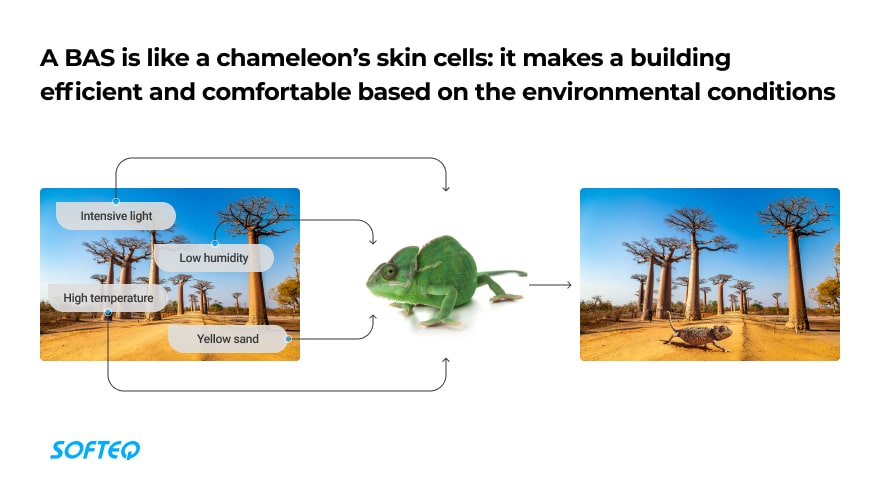
Technically, it works like this. A BAS includes a system of pre-programmed controllers and a network of sensors. Sensors provide the controllers with information about building conditions.
In response to sensor readings, the program inside the controller decides how to regulate the building equipment. After that, the controllers command an output device (actuators and relays) to perform the task. Building automation systems also have a user interface. It allows a building operator to adjust the control settings, view the system status, and react if something goes wrong.
Types of Building Automation Systems
Depending on the underlying technology, BAS can have different functions from traditional pre-programmed control of building systems to dynamic autonomous management. Let’s take a closer look at different types of building automation systems.
- A traditional BAS manages the building based on the experience of the facility operator. For example, they know what time building occupants usually go home. Based on that, they program the BAS system to turn off the lights and air conditioning at a certain time. Such systems are usually not easy to extend. Their elements—sensors, controllers, and actuators—are connected by wires. Adjustments are possible only through the controller’s programming, which requires special skills.
- A BAS with IoT manages the building based on insights from IoT systems. This allows building operators to view performance history and data from related systems. In this case, they can program a BAS based on more informed decisions and develop accurate optimization strategies. IoT for commercial buildings also makes it possible to monitor in real time anything inside the facility, including individual rooms and pieces of equipment. That means operators can quickly identify the cause of the failure and fix it remotely.
- A BAS with IoT and AI manages the building based on dynamic data analysis without human involvement. If different occupant groups come and go at different times, such systems regulate the temperature individually in different rooms. If something changes in their behavior, the BAS notices this and adapts the equipment mode to new habits.
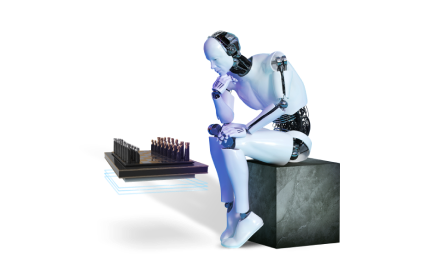
New commercial buildings usually have modern BAS systems—with IoT and AI capabilities. When owners of older buildings want to upgrade their facilities, they can completely replace a traditional BAS with a new one or install a modern overlay solution on top of the existing BAS.
Different types of commercial buildings can take advantage of modern BAS solutions. From high-end to facilities in need of renovation—they all can stand out from the competition. Let's take a closer look at the benefits of building automation systems with smart features.
Class A Buildings: Meeting Needs of The Most Demanding Tenants
Class A are the best-looking, high-quality buildings of the city. Typically, they‘re brand new or have undergone a complete renovation. They have the most desirable locations in major cities like New York City. As a result, they command the highest rents.
Their tenants are the most profitable companies or highest income earners: large financial institutions, ad agencies, law firms, and tech giants. They want to make a wow-effect on their clients. If things don't work out as they should, they’ll look for buildings with more comfortable amenities.
This is where smart BAS systems come in handy. Here are some of the ways they can provide comfort to occupants.
Seamless Operation of the Building
BAS with AI functions can keep a building running smoothly. They enable operators to repair building systems quickly so that occupants don't even notice when something breaks. Some even replace parts before a breakdown occurs. For example, such solutions can detect early-stage pipe failures. In this case, immediate valve shut-down and quick repair can prevent severe water damage.
Comfortable Temperatures
Smart BAS solutions also can keep the temperature in the office at a comfortable level. They build virtual models with an exact schedule of temperature adjustments. To do this, they use historical data from HVAC and occupancy sensors, along with weather data.
Smart BAS solutions automatically cool rooms before the expected heatwave. Or preheat them before people come to work in cold weather. Also, they allow you to create climate zones depending on the preferences of different groups in the room.
Air Quality Control
Building automation systems can take care of the quality of workers' breathing. For that, AI algorithms analyze signals from air quality sensors and weather information. If the air quality isn’t good enough, they send signals to the HVAC controls to open an OA damper.
Such systems also save energy. Given the data from occupancy sensors, the BAS will only balance the air in rooms occupied by people.
Real-Life Example: How to Safely Reopen a Building During the Pandemic
1111 Broadway is a class A commercial building in California. They use AI to dynamically control AHU fan speed, temperature, and humidity in the building. The system makes decisions based on data from temperature and humidity sensors. Based on this data, the AI algorithm determines heating and cooling requirements and sends setpoints to the HVAC system. Insights from AI also help engineers identify malfunctioning equipment.
In the summer of 2020, in the midst of the COVID-19 pandemic in California, it was the smart BAS that allowed the owners to safely reopen the building. They could easily adapt ventilation, filtration, humidity, and temperature settings in accordance with ASHRAE (American Society of Heating, Refrigerating, and Air-Conditioning Engineers) recommendations to suppress virus transmission.
When someone had a positive COVID test result, the building ran a decontamination mode. Once the last person left the building in the evening, it was heated up for approximately nine hours. Then, the BAS used the outside air to cool the building back down. By 6 a.m. the next day, the building was returned to normal temperature and humidity settings.
Class B Buildings: Monitoring Building in Real Time for Quick Repair
Class B buildings are typically around 15-30 years old, showing some signs of wear and tear. Some of them started out with a Class A rating but then downgraded due to age and ageing. On the market, such buildings are average and command average rental rates. But, if well renovated, they can regain their position as a Class A building.
If owners don’t plan to turn their Class B building into Class A, they can make it more attractive in another way with IoT building automation. For example, by moving building management to the cloud, managers can check the status of building systems via laptop or smartphone. So, they can quickly find the issue and repair or adjust equipment from anywhere.
For the building occupants, this brings increased comfort. They don't have to wait for hours working in uncomfortable conditions. It will also save energy that’s wasted when the equipment isn’t working properly.
Real-Life Example: How to Fix Issues in Older Buildings Quickly
California’s County of San Bernardino covers more than 20,000 square miles. For the County's Facilities Management staff, this means a lot of work. They had to spend hours daily managing tenant complaints. And just to diagnose the issue, they needed to drive about an hour and a half in one direction.
The County decided to make a technological upgrade. They replaced outdated controllers in the building units. Then they combined HVAC, safety, lighting, water, and power systems from different manufactures into a single one with web access. Now facility managers can identify problems remotely. They receive 24/7 email alerts and adjust the system over the network instead of on-site.
In the first two years alone, the County has managed to save $222,120 and improved customer service.
Class C Buildings: Saving Money to Invest in Repair
Class C properties are usually 30+ years old. They are in need of regular repairs and maintenance. Rental rates are the lowest. Tenants are normally small, family-run businesses and newer companies that lack sufficient financial resources.
Upgrading older buildings may sound daunting. But there is a low-cost way to save resources using technology and invest them into repairs. For example, if you augment your equipment with IoT sensors, you can identify which operations use the most energy. After analyzing this data, you can develop a cost savings strategy and achieve good results like the company in the example below.
Real-Life Example: Low-Cost Upgrade of a Class C Building
The Blair Office Building in Maryland is a class C office facility built in 1963. Its owners wanted to transform the building into a leader in energy efficiency, even when compared to modern buildings. They used real-time data and analytics to get an overview of the energy consumption of different building subsystems. Based on these insights, they identified simple energy savings measures.
The building had an obsolete control system, which was beyond repair. But as a result of the analysis, they were able to reproduce the needed functions without a large capital investment. They added breaker-level controls for each floor, new Variable Frequency Drives (VFD) for loop pumps, and time-of-day scheduling for cooling tower and heating pumps.
With just a $44,000 investment, the building owners were able to reduce energy use by almost 30% and return $50,000 in energy savings in one year.
Upgrading the Class
With BAS, commercial real estate businesses can not only save resources, but also generate higher profits. When lower-class buildings are well located, they may be attractive to commercial real estate investors. They buy such office facilities with a redevelopment plan in mind. The investors can transform Class C buildings into class B or even class A properties with modern technical infrastructure.
Real-Life Example: How to Upgrade a Class C Building to a Green Class A Office
SHARP Development is a real estate company from California. They transformed a 1970s Class C building in Silicon Valley into a net-zero energy Class A office.
They wanted to reduce the amount of needed HVAC equipment. For that, the company insulated the building well and installed operable windows and skylights, which are controlled by the building automation system. At night, when the temperature has dropped, the BAS tells the windows and skylights to open in order to cool the building down and exchange the air. Now the building has 20% of the HVAC equipment that a normal building has, and it’s almost never on.
Originally, the company expected to lease the building up in 18 months. But instead, they found tenants in three months and earned an extra $2.40 per square foot per year above the market rent.
Bottom Line
Smart building technology can add value to commercial real estate assets of any type. In addition to saving resources, it also brings their owners higher revenue.
Commercial smart buildings can help business owners reduce vacancies, cut operating costs, yield higher rates per square foot, and become green-certified. And it doesn’t have to be a huge investment. Each building has its own goals, and with the right approach, you can solve the problem point by point.
When you need help with smart office solutions, Softeq will help you with our full-stack expertise. Our engineers can advise you at any stage from ideation and design to technical implementation. Contact us to learn more.
More articles on the topic



